- 09
- Dec
Chii chinonzi Current?
Chii chinonzi electric current? Chekutanga rangarira, ndeipi tsanangudzo yezvino yatakadzidza?
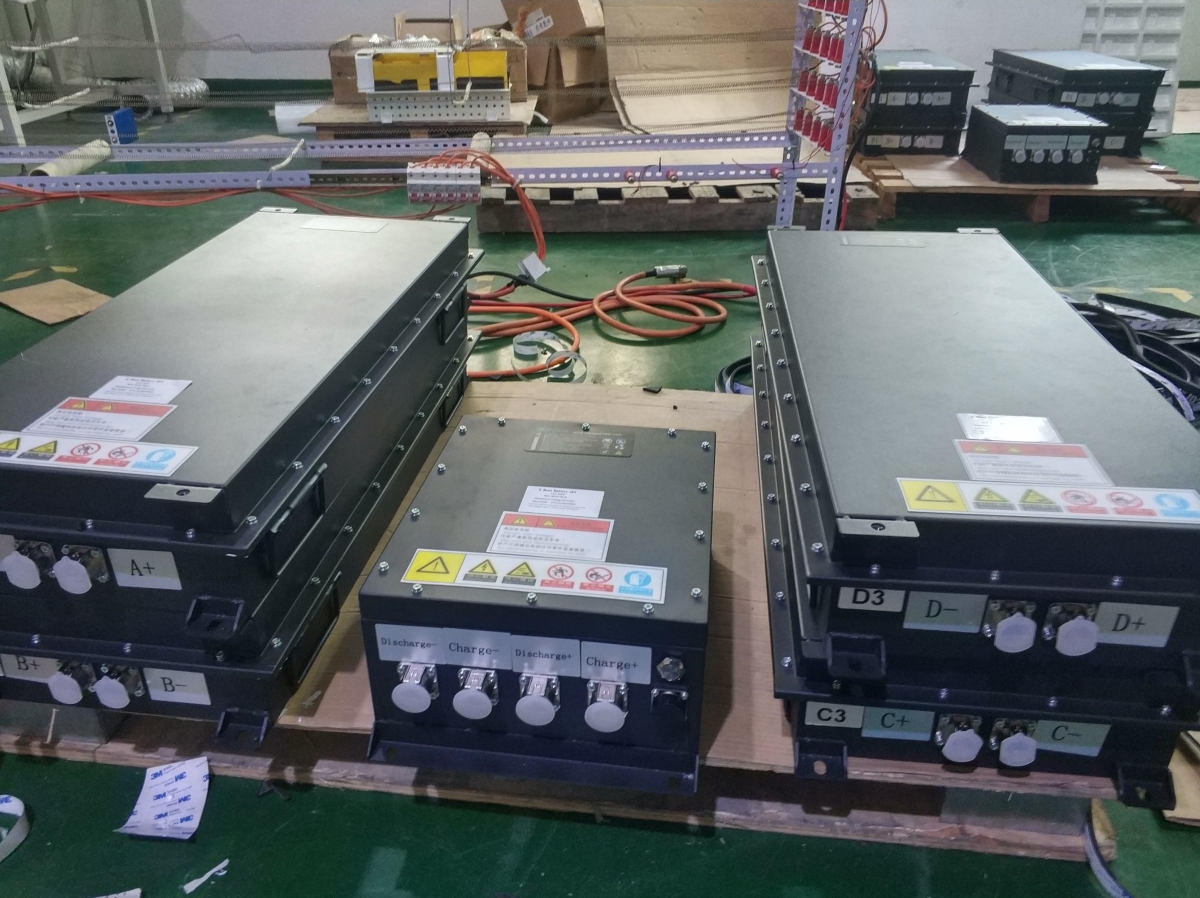
Zvakangoreruka, mafambiro anotungamira ezvimedu zvinochajiswa mune conductor imagetsi emagetsi.
Chete kana chinhu chachajiswa zvidimbu zvinogona kufamba zvakasununguka, chinogona kutumira magetsi — ndiko kuti, kufambisa magetsi. Izvi zvimedu zvinochajiswa zvinotora chikamu mukuitisa zvinonzi vatakuri. Kune simbi, semuenzaniso, maerekitironi ekunze emaatomu chete anogona kuita sevatakuri.
The “directional movement” in the definition of electric current is often misunderstood. Many people think it refers to movement with a certain direction, of course not! Doesn’t the direction of movement of the electrons in the AC circuit change?
Muchokwadi, kutarisisa kune chekuita ne “random movement”!
Sezvo maerekitironi ari ma microscopic particles, anofanira kunge ari mukufamba kwekupisa nguva dzose. Thermal motion is a random motion, sezvinoratidzwa mumufananidzo uri pasi apa. 
Kufamba uku kunomhanya chaizvo. Semuenzaniso, musimbi patembiricha yekamuri, sipidhi yemagetsi ekudziya kwemagetsi iri pahurongwa hwemazana emakiromita pasekondi!
Kana iwe ukanyatsotarisisa kune iyi yakasarudzika mafambiro, iwe uchaona kuti gwara rekufamba kwechikamu chimwe nechimwe harina kurongeka chero nguva. Kana iwe ukawedzera velocity vectors ezvimedu izvi, mhedzisiro inenge zero.
Zvino wedzera munda wemagetsi kune conductor, uye erekitironi inotungamira mafambiro ekutungamira pahwaro hwekufamba kusina. Tichifunga kuti nzvimbo yemagetsi iri kuruboshwe kweimwe nguva yenguva, kufamba kwema electrons kunotarisa sezvinotevera. Mabhora matsvuku anomiririra maatomu esimbi ari pacrystal lattice, uye madotsi anofamba anomirira maerekitironi akasununguka. 
Does it look fast? That’s because electronic movement is really fast! But in fact, the random motion, which accounts for a large proportion of it, does not contribute to the current. When the random motion is eliminated, the rest is just like the slow look below.
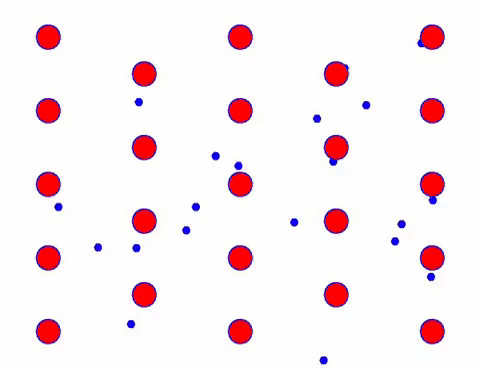
Indeed, the directional movement of electrons is much slower than the speed of thermal movement. This “grinding” movement of electrons is called drift, or “drift”. Sometimes, electrons will run in the opposite direction because of collisions with atoms. But in general, electrons move in one direction.
Kana munda wemagetsi ukachinja kwaienda, kwaienda electron drift inochinjawo.
Naizvozvo, rudzi urwu rwekufamba kwegwara kunoreva kuti hwerengedzo yemasipidhi emaerekitironi ese ari kutora chikamu mukuitisa pane imwe nguva haisi zero, asi kazhinji iri mune imwe nzira. Iyi nzira inogona kuchinjwa chero nguva, uye ndiyo nyaya yekuchinjana ikozvino.
Naizvozvo, ikozvino haisi yakanyanya “directional movement” yekuchaja yemagetsi sezvo iri “collective movement” yekuchaja kwemagetsi.
The magnitude of the current in the conductor is expressed by the current intensity. The current intensity is defined as the amount of electricity passing through the cross-section of the conductor in a unit time, namely
We have learned some physical quantities that contain the word “intensity”, such as electric field intensity and magnetic induction intensity. They generally represent the apportionment per unit time, unit area (or unit volume, unit solid angle). However, the word “intensity” in the current intensity does not reflect the current apportionment of the area.
In fact, another physical quantity is responsible for the distribution of current to area, which is current density.
Sezvo musimboti wemagetsi emazuvano iri mafambiro ekufambisa kwechaji yemagetsi, panofanira kunge paine hukama pakati pekusimba kwezvino nekumhanya kwekukukurwa!
In order to obtain this relationship, we must first clarify a concept-carrier concentration, that is, the number of carriers in a unit volume, which is expressed by .
Zvinofungidzirwa kuti conductor muchinjiko chikamu ndeiyi, iyo inotakura inosungirirwa ndeye, iyo yekukukurwa velocity iri, uye inochajirwa mhosva ndeye.
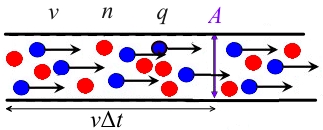
Then the charge in the conductor on the left side of the surface is, and these charges will pass through the surface within a certain period of time, so
Ichi chiratidziro chemicroscopic chesimba razvino.
Density yazvino ndiko kugovaniswa kweazvino kune nzvimbo, saka ukuru hwe density iripo, asi inotsanangurwa sevekita, uye kwakananga ndiko kutungamira kweiyo drift velocity vector yevanotakura zvakanaka, saka kukukurwa kwemaerekitironi mumhepo. simbi inogona kuwanikwa kubva kuSpeed iyi, semuenzaniso pazasi.
Funga nezvewaya yemhangura, tichifunga kuti atomu rimwe nerimwe remhangura rinopa maerekitironi somutakuri. Kune 1 mol yemhangura, vhoriyamu yaro ndeiyi, molar mass is, density iri, ipapo iyo inotakura tambo yemhangura ndeye.
Avogadro anogara kupi. Kuwanda kwemhangura kunowanikwa, uye kukosha kunowanikwa nekutsiva ndeye unit / cubic mita.
Tichifunga kuti radius yewaya yemhangura i0.8mm, irikuyerera inosvika 15A, =1.6 C, uye nhanho yekukukurwa kwemaerekitironi inoverengerwa se.
Zvinogona kuonekwa kuti kukukurwa kumhanya kwemaerekitironi idiki chaizvo.
Kune avo vanodzidza matunhu, iri pamusoro ndiyo tsanangudzo yakazara yezvino.
Asi mufizikisi, tsananguro iri pamusoro pezvazvino inongova tsananguro nhete. More general currents haana kuganhurirwa kune maconductor, chero bedzi kufamba kwemagetsi kuchaji kuri iko zvino. Somuenzaniso, apo maerekitironi eatomu rehydrogen paanenge achipoterera nucleus, simba remagetsi rinoumbwa mukutenderera kwaro.
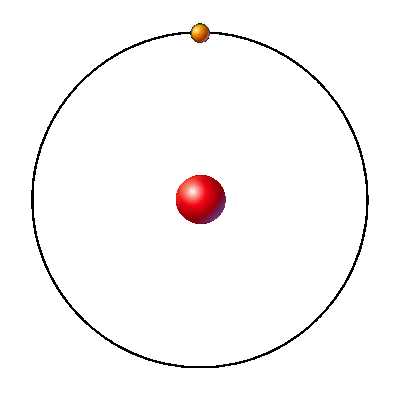
Suppose the amount of electronic charge is and the period of movement is. Then every time that elapses, there is such a large amount of charge passing through any cross section of the loop, so the current intensity is based on the relationship between period, frequency and angular velocity, and the current can also be expressed as
Kune mumwe muenzaniso, dhisiki yesimbi yakachajiwa, inotenderera yakatenderedza axis yayo, inoumbawo loop currents ine radii yakasiyana.

Iri rudzi rwemazuva ano haisi yakajairika conduction ikozvino uye haigone kuburitsa Joule kupisa! Haikwanise kuumba dunhu chairo.
Otherwise, would you give me a calculation of how much joule heat is generated per second by the electrons of the hydrogen atom?
Muchokwadi, ikozvino muvacuum haigutsi mutemo weOhm. Nokuti, nokuda kwesimba remagetsi rinoumbwa nekufamba kwezvimedu zvinopomerwa muvhavha, vatakuri havana kudhumhana zvakafanana nelatisi musimbi, saka vacuum haina kupikisa uye haina conductance.
The movement of electric charges generates electric current, and the electric charge itself excites the electric field. This is easy to cause a misunderstanding. Many people therefore think that the electric field of the charged particles that form the electric current must be exposed. But in fact, for the conduction current in a general conductor, carriers flow on a background composed of a large number of positively charged metal ions, and the conductor itself is neutral!
Isu tinowanzo kudaidza rudzi urwu rwemhando yazvino “yakaenzana ikozvino”. Iyo yakaenzana pano inoreva kuti inogadzira magineti pahwaro hwakafanana neyakajairwa conduction ikozvino!
Chiyeuchidzo: Usapesanise “yakaenzana ikozvino” pano ne “yakaenzana dunhu” mukuongororwa kwedunhu.
In fact, when we first studied the magnetic field, the electric current in Biot-Saffar’s law was the generalized electric current that contained this equivalent current. Of course, the conduction current in Maxwell’s equations also refers to the generalized current.
Vaya vakadzidza nezve photoelectric effect vanoziva kuti kana photoelectron inodonha kubva kune cathode ichienda kune anode, kana simba remhepo risina hanya, ikozvino inokonzerwa nekufamba kwemagetsi emagetsi muvhavha, uye hapana kuramba, saka haina kudziviswa nemutemo waOhm.
Saka, ichi ndicho chinhu chega chemagetsi aripo mufizikisi?
Aihwa! Kune zvakare marudzi maviri, anoti magnetizing ikozvino uye displacement ikozvino.
Iwo zvakare maviri akaenzana mafungu, ayo, sekureva kunoita zita, anounzwawo kutsanangura magineti. Mune mamwe mazwi, vakaparadzana kubva pachinhu chekutanga chezvino “charge movement”!
That’s amazing! There is no electric charge movement, so why can it be called an electric current?
Usanetseka, uye teerera kwandiri zvishoma nezvishoma.
Ngatitarisei kune magnetizing ikozvino kutanga.
Zvakaonekwa kuti magnetism inokonzerwa nekufamba kwemagetsi (kwete kufunga nezvetsanangudzo yemagnetism neiyo intrinsic properties ye spin yenguva iripo). Kuti atsanangure magineti echisikigo, nyanzvi yefizikisi yekuFrance Ampere akaisa pfungwa ye “molecular circulation”. 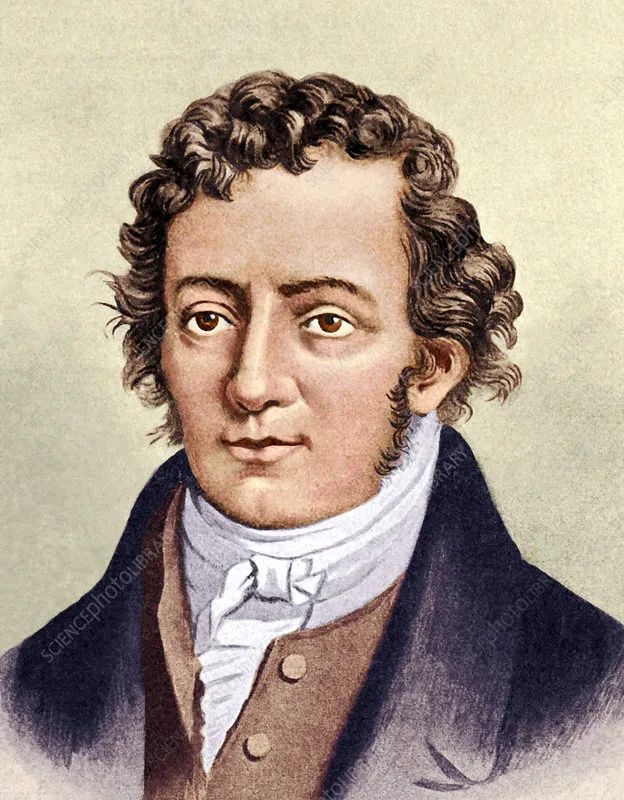
Sezvinoratidzwa pamufananidzo uri pazasi, chero atomu kana molecule inogona kutorwa seine chaji yemagetsi inotenderera nepakati, ichigadzira diki loop current, ndiko kuti, “molecular circulation”.
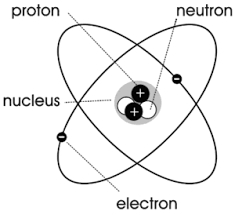
Zvinoenderana nemutemo wekuti magetsi anofadza magineti, kutenderera kwemolecular uku kunoburitsa huwandu hwemuviri hunodaidzwa kuti magineti nguva. Saizi yaro inzvimbo yakavharirwa nekutenderera kwema molecular yakapetwa neakaenzana ikozvino yekutenderera kwema molecular, uye kutungamira kwayo kuri murudyi-ruoko rwekutenderera hukama negwara rekutenderera, kureva.
Obviously, the direction of the magnetic moment is exactly along the direction of the magnetic field formed by the circulating current
. 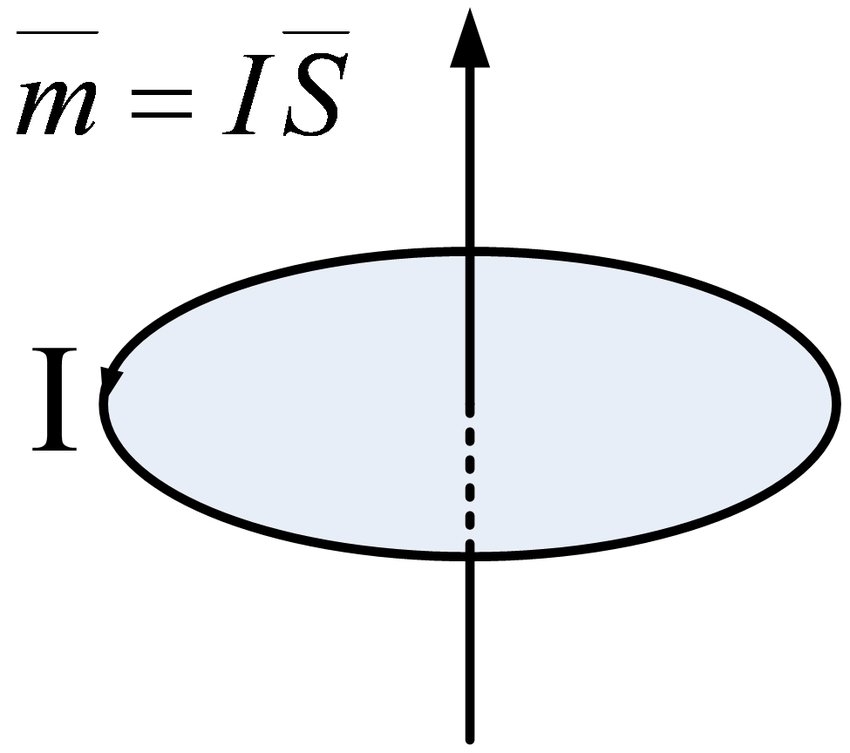
Mumamiriro ezvinhu akajairika, kurongeka kwema molecular kutenderera kwechinhu kune chaotic, saka chinhu chacho hachisi magineti, sezvakaratidzwa kuruboshwe rwechifananidzo chiri pasi apa. Kana yaiswa kunze kwemagineti, aya matenderedzwa emamorekuru anenge akarongeka zvakatsvinda. Sezvinoratidzwa kurutivi rworudyi rwechifananidzo chiri pasi apa, nguva dzadzo dzemagineti dzakarongwa munzira imwe sezvinobvira, kungofanana netsono duku dzisingaverengeki dzemagineti dzakaunganidzwa pamwe chete kuti dziumbe simba remagineti rose, uye zvinhu zvose zvinoumbwa nawo zvinova magnetic.
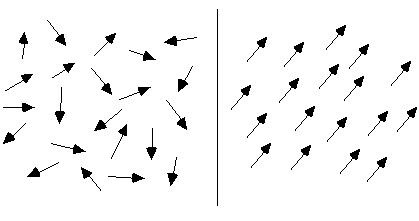
Ngatitii kune cylindrical magineti, mukati memocular circulation yakarongedzwa zvakanaka, uye zvikamu zveimwe neimwe molecular circulation pamucheto wegineti chikamu chakabatana kuita kutenderera kukuru, sezvakaratidzwa mumufananidzo uri pasi apa. 
Zvichienderana neizvi, tinogona kufunga kuti magineti ebar yakafanana ne-energized solenoid. Nemamwe mashoko, pane simba risingaoneki rakabatwa pamusoro pemagineti! Rudzi urwu rwezvino harugone kubatana uye kushandiswa. Inovharirwa pamusoro pemagineti. Tinozvidaidza kuti “binding current” kana “magnetizing current”.
Nokudaro, iyo magnetizing current ndeyezvino, nokuti yakafanana neyezvino inoumbwa nekufamba kwemagetsi chaiwo emagetsi, ayo anogona kuenzana kugadzira magnetic field!
Ngatitarisei kune inotamisa ikozvino.
According to the Ampere’s loop theorem, the integral of the magnetic field strength on a closed path is equal to the flux of the current density on any curved surface bounded by this path, that is, this theorem is called Stokes’ theorem in mathematics. It tells us that the integral of a vector along any closed path must be equal to the flux of its curl (here) to any surface bounded by the closed path.
Since it is a mathematical theorem, it must always be correct, because mathematics is a logical system based on axioms.
Naizvozvo, iyo Ampere Loop Theorem inofanira kugara yakabata!
Nekudaro, nyanzvi yefizikisi yekuScotland Maxwell akawana kuti paakatarisana nedunhu risina kugadzikana, iyo Ampere loop theorem yaipokana.
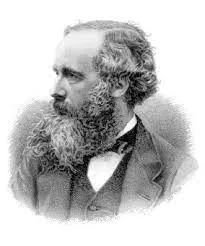
The typical unstable current occurs during the charging and discharging of the capacitor. As shown in the figure below, there is an unstable current during the short period of capacitor charging.
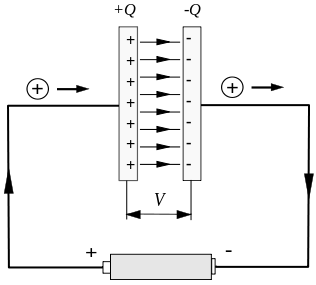
But the circuit is disconnected between the capacitor plates, which will cause a serious problem.
Suppose we consider a closed path that bypasses the wire, as shown in the figure below, the circle marked by C, and the curved surface with it as the boundary can be arbitrarily selected. In the figure, the circular plane enclosed by C itself and across the capacitor are selected. The curved surface of the left plate. 
According to the circular surface, it can be seen that according to the curved surface, but as a loop integral of the magnetic field strength, its value should be determined!
Maita sei?
Maxwell believes that the Ampere’s loop theorem must be established. Now that there is a problem, it must be because a part of the current has not been discovered by us before, but it does exist!
Saka, sei kuwana ichi chikamu chezvino?
Sezvo dambudziko riri pakati pemahwendefa, tanga kubva pakati pemahwendefa.
Kuburikidza nekuongorora, Maxwell akaona kuti zvisinei nekuchaja kana kuburitsa, pane huwandu hwemuviri pakati pecapacitor maplate panguva dzese inowiriraniswa nehukuru uye kutungamira kweiyo ikozvino. Ndiyo nguva inobva pakuyerera kwemagetsi ekufambisa vector, kureva kuti, inotsanangurwa seyazvino yekufambisa.
Kana ichifungidzirwa kuti chikamu ichi ndicho chikamu chezvino chisati chaonekwa kare, saka ikozvino yakakwana ikozvino. Izvi zvinoreva kuti, kunyange zvazvo dunhu riri pakati pemahwendefa rakabviswa, rinobva kumagetsi ekufambisa kwemagetsi uye chiyero chezvino pamwe chete, sese , Iva nechokwadi chekuenderera kwezvino nguva dzose.
Kudzokera kune yakapfuura kupokana, isu zvino tinoziva kuti, maererano nezvinodiwa zveStokes ‘theorem, kana uchiverenga kuyerera kweazvino density yenzvimbo yakavharwa, iyo density yekutamisa ikozvino inofanirwawo kutariswa, ndiko kuti, iyo yakazara ampere loop. theorem saka, Ne “kufumura” ichi chitsva chezvino chikamu, dambudziko reAmpere Loop Theorem rakagadziriswa!
The reason why “introduction” is not used here, but “discovery” is used here. What I want to emphasize is that this kind of current is not a mathematical compensation, but a real thing, but it has not been discovered before.
Why does it exist in the first place? Because it acts as an electric current, like a conduction current, it excites a magnetic field equivalently, except that there is no movement of electric charges, no wire is required, and no Joule heat can be generated, so it has been ignored!
Asi iyo iripo yega, ingochengeta yakaderera chimiro, yanga ichinakidza chinyararire iyo magineti ipapo nguva dzese!
Mune mamwe mazwi, kana takatarisana nemagnetic field, tsanangudzo yepakutanga yezvino yakanyanya kutetepa. Izvo zvakakosha zvemagetsi hazvisi kufamba kwemagetsi emagetsi, inofanira kuva chimwe chinhu chinogona kufadza magnetic field.
So far, the several forms of current have been introduced. They all exist objectively, and what they have in common is that all currents can equally excite the magnetic field.
